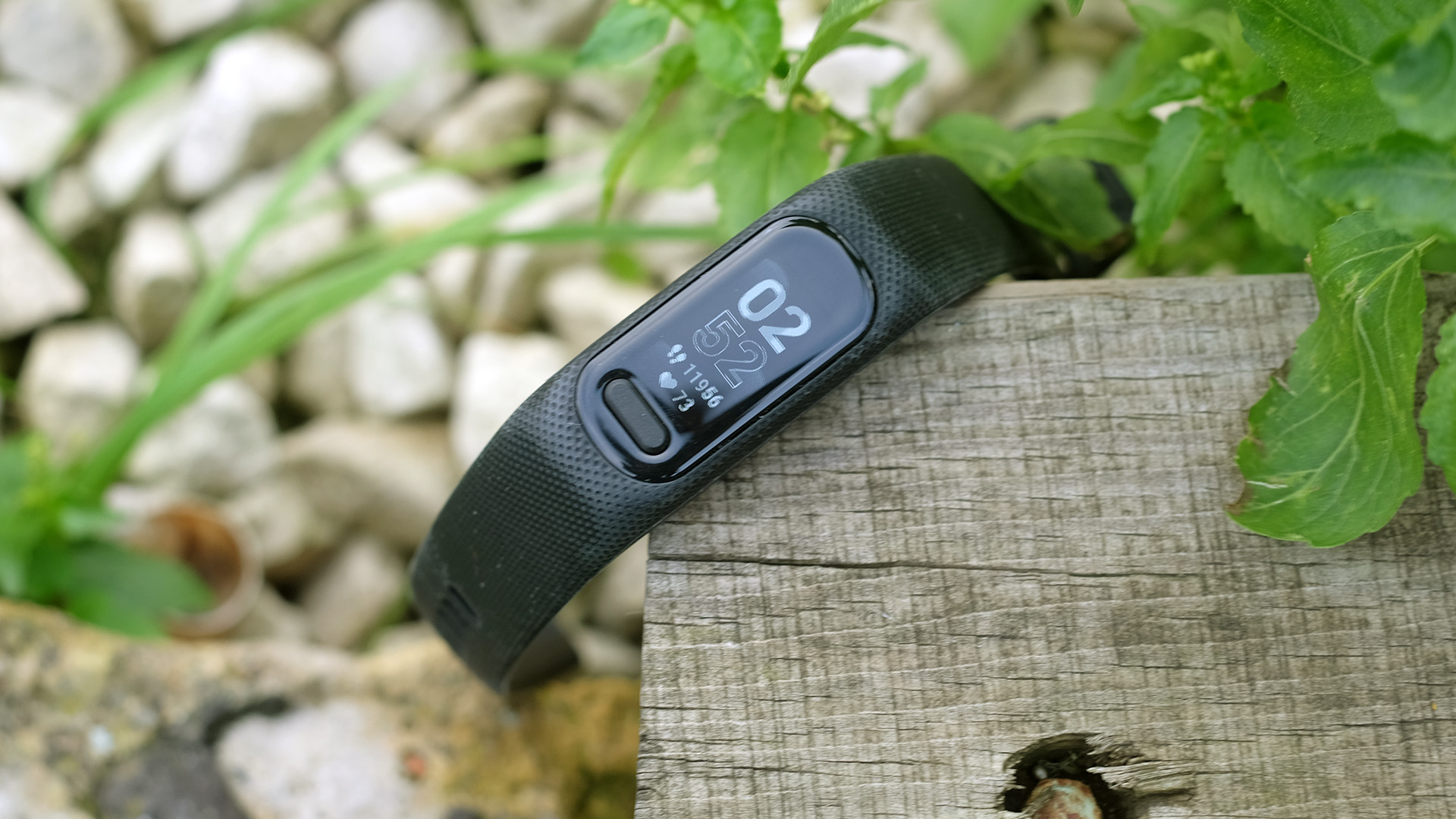Live Science Verdict
The Garmin Vivosmart 5 is a solid casual fitness tracking band with good heart rate accuracy for its class, but it costs quite a bit for the features on offer.
Pros
- +
Exercise modes are more robust than most
- +
Screen brightness adjusts automatically
- +
Good heart rate reader
Cons
- -
No on-board GPS
- -
Quite expensive
- -
Basic monochrome, plastic screen
Why you can trust Live Science
The Garmin Vivosmart 5 is one of Garmin’s most affordable fitness trackers. It’s a band, not a big-faced watch, so it’s suitable for people looking for something small, light and unobtrusive that they can wear alongside a watch without looking silly.
88 x 154 pixel OLED screen
26.5g
5ATM water resistance
Up to 7 day battery life
Connected GPS
Optical heart rate reader
SpO2 readings
However, the Garmin Vivosmart 5 is not among the very best fitness trackers, for a simple reason. While it’s a breeze to use and fairly good at tracking your heart rate during exercise, it is a little expensive for the tech and features it offers. It also doesn’t have its own GPS, so it can’t be used for phone-free runs. And the interface is actually slightly less effective for quick daily stat checks than the higher-end Garmin watches.
As much as we have enjoyed using the Vivosmart, the Fitbit Charge 5 throws some serious shade on it, offering loads more advanced features for similar money. The feature set and design here are a little too close to those of a much cheaper tracker from a brand like Xiaomi, even if it does beat those for heart rate accuracy.
Garmin Vivosmart 5: Price and release date
The Garmin Vivosmart 5 is one of Garmin’s cheapest trackers, but it is not at all cheap by the standards of this category. It costs $149/£129, roughly the same as the Fitbit Charge 5.
Such a price places the Vivosmart at the higher end of fitness bands, where models like the Xiaomi Smart Band 6 can cost less than $50/£40.
The Garmin Vivosmart 5 arrived in April 2022, almost four years after its predecessor the Vivosmart 4, which launched in September 2018.

Garmin Vivosmart 5: Design and display
The Garmin Vivosmart 5 is among the smallest and lightest fitness trackers that Garmin makes, and its design is ultra-pragmatic too. The actual fitness tracking brain is a plastic lozenge that slots into a one piece rubbery strap, removing the need for fiddly fastening points.
It is water resistant to 5ATM, meaning it’s fine in the swimming pool and the shower. This also means you can happily rinse it under a tap if it gets grimy from weeks of salty sweat deposits.
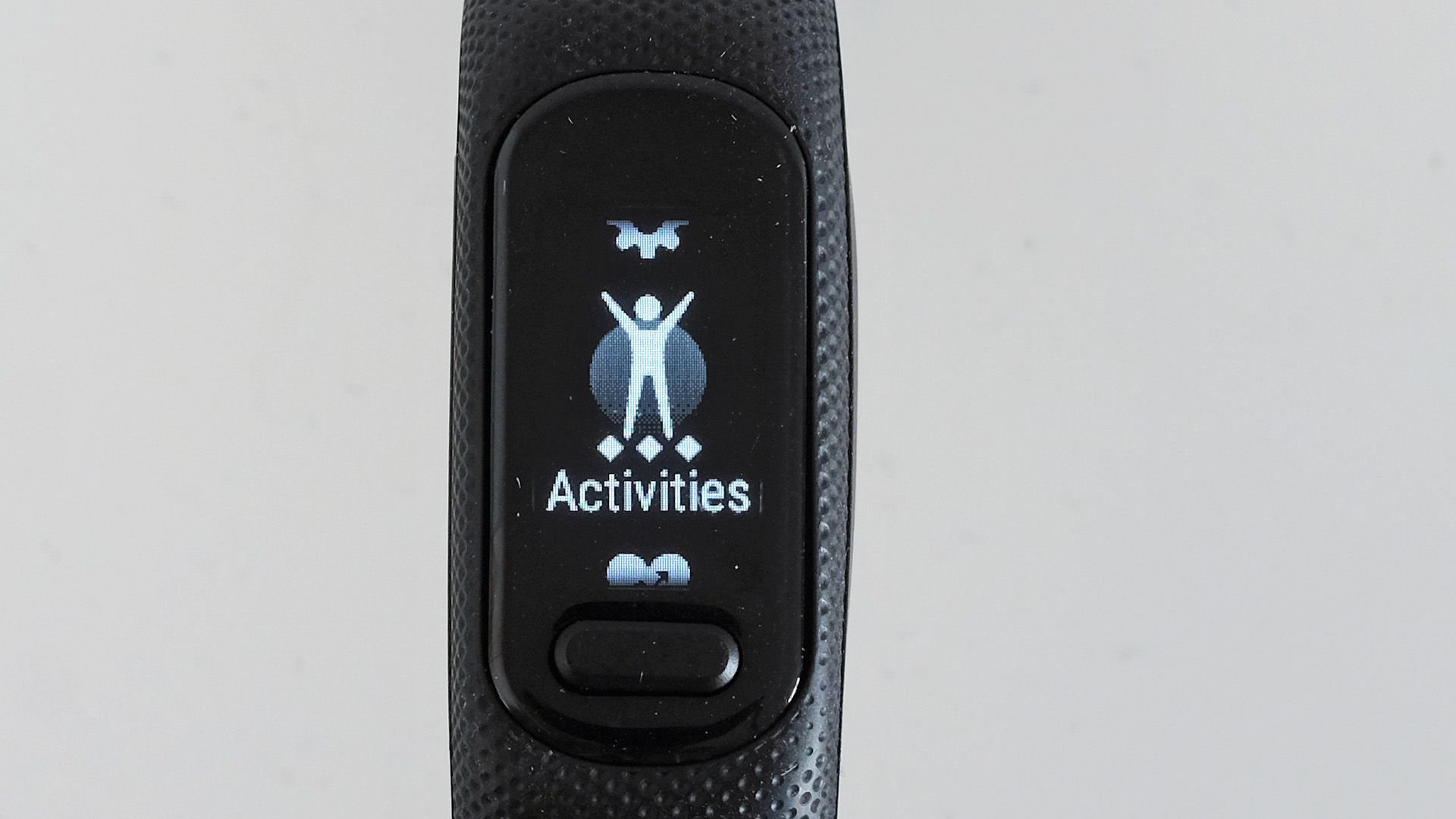
The Vivosmart 5 screen is a lot lower-end than plenty of fitness trackers and watches you could buy at this price, however. It’s a 0.84-inch OLED panel (monochrome) with limited 154 x 88 pixel resolution. It’s not fancy, but it’s still miles better than some budget color fitness trackers screens because it is bright, and the brightness level automatically scales to suit the environment.
It looks clear when you go out for a run on a sunny day, which is important. We were less pleased by its ruggedization. The screen’s top layer is plastic, which is much softer than a good toughened glass and therefore more likely to pick up scuffs and scrapes.
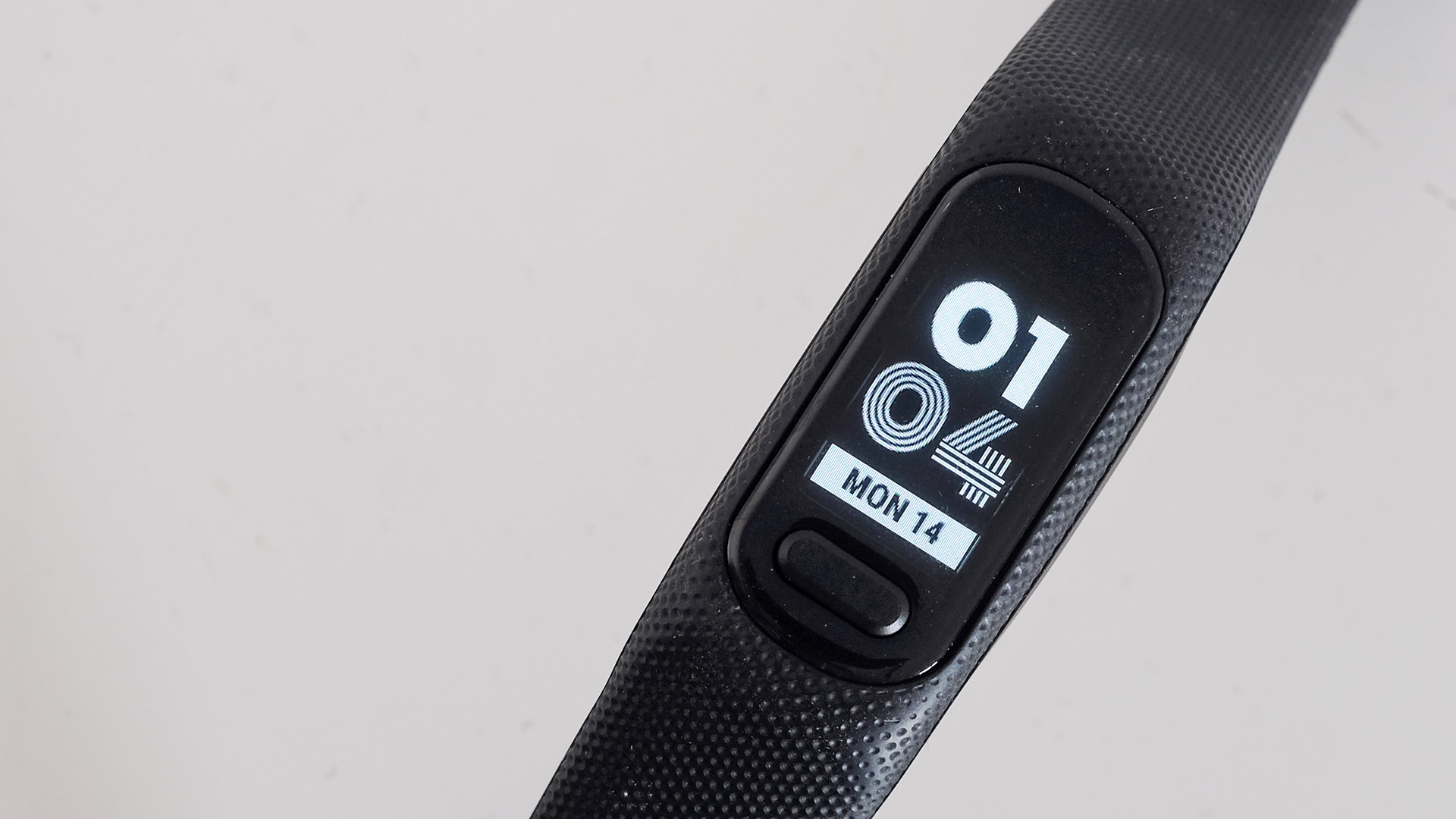
Garmin Vivosmart 5: Features
The Garmin Vivosmart 5 is a simple tracker by Garmin standards. You swipe on the touchscreen to move between interface pages, while the button below the screen typically takes you back to the watch face or to the menu where you can start a tracked activity.
Garmin has almost tried to replicate the day-to-day experience you’d get with one of its higher-end trackers with the Garmin Vivosmart 5. Flick up from the watch face and you get to pages of daily stats, like your step count, calories burned and so on. However, thanks to the watch’s tiny screen, you have to wait almost three seconds for these stats to appear, as the description of what each is scrolls by first. While made for a casual audience, we think a more hardcore watch like the Garmin Instinct 2 makes it a lot easier to see daily stats like your step count quickly.
Thankfully, however, several of the Garmin Vivosmart 5’s 12 watch faces show your step count. A few display your heart rate and step count too. Page transitions are accompanied by smooth-looking animations, but the software ultimately feels a little stiff as its structure is so rigidly paginated.
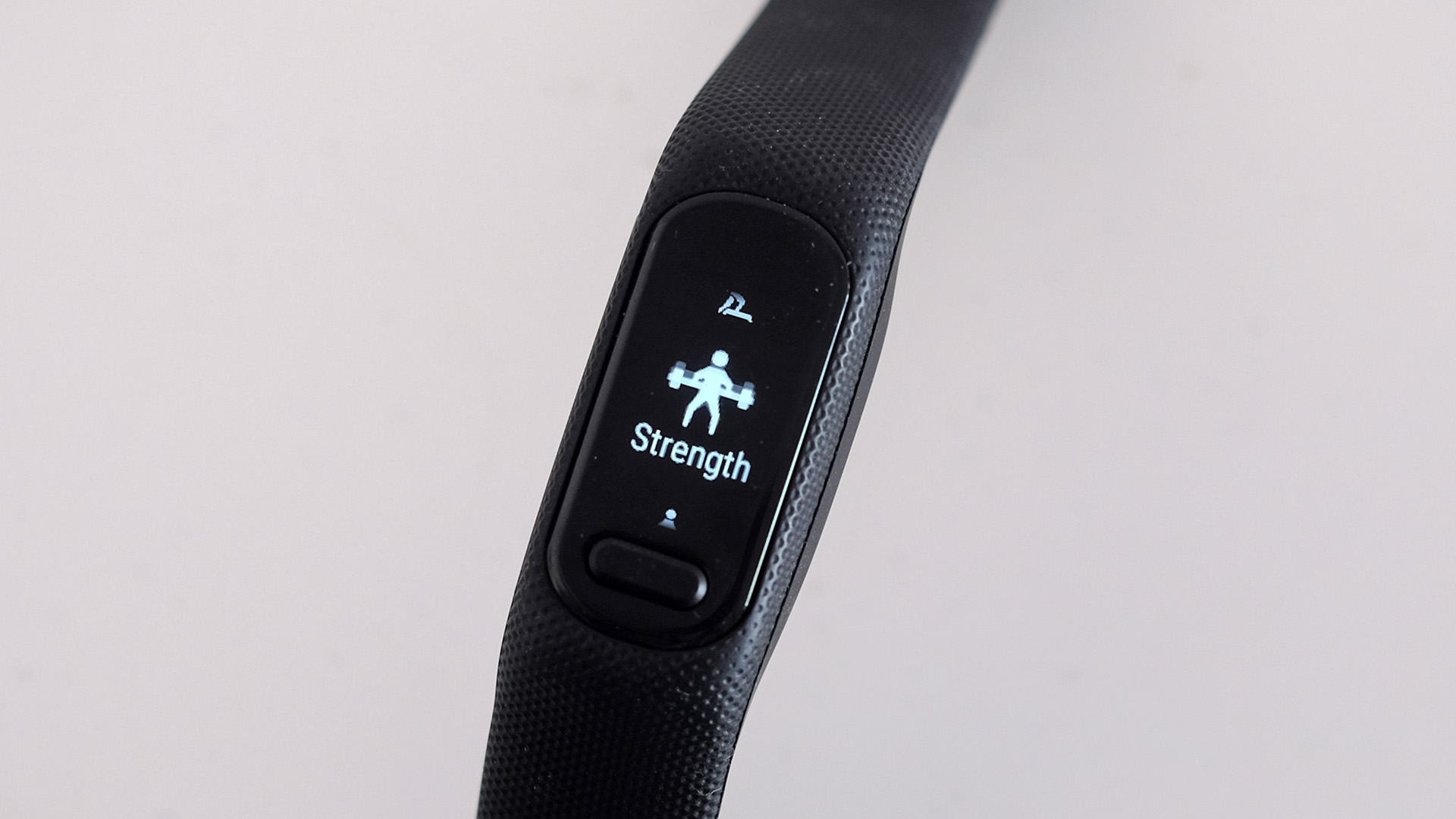
Throughout the day, this fitness tracker records your heart rate, your steps and estimates your stress and breathing rate. It monitors your sleep overnight and it can also look at your blood oxygenation. This feature, called Pulse Ox, is turned off by default as it’s a battery drainer, but you can set it to record overnight or all day.
There are two key missing features in the Garmin Vivosmart 5; it doesn’t have GPS or an altimeter. GPS is what lets a fitness tracker create maps of your walks and runs, and accurately work out distances traveled. The Vivosmart 5 can connect to your phone to get this data, but this tracker is ultimately quite pricey to rely on this technique, known as connected GPS.
The other missing piece, an altimeter, is used to count the number of stairs you climb each day, and it’s one of the best add-on tools for passive fitness tracking. The Vivosmart 4 had an altimeter, this band does not — a disappointing downgrade.
The number of exercise tracking modes will sound limited too. The Garmin Vivosmart 5 supports 14 modes, and 10 can be present on the band at any one time. You add them using the Garmin Connect app on your phone.
This sounds super stripped back, but there’s actually more worth here than some budget trackers that have several times this number. Garmin tries, whenever it possibly can, to make these modes distinct. For example, in the Yoga mode the Vivosmart 5 lets you record when you switch poses, and measures your breathing rate and stress.
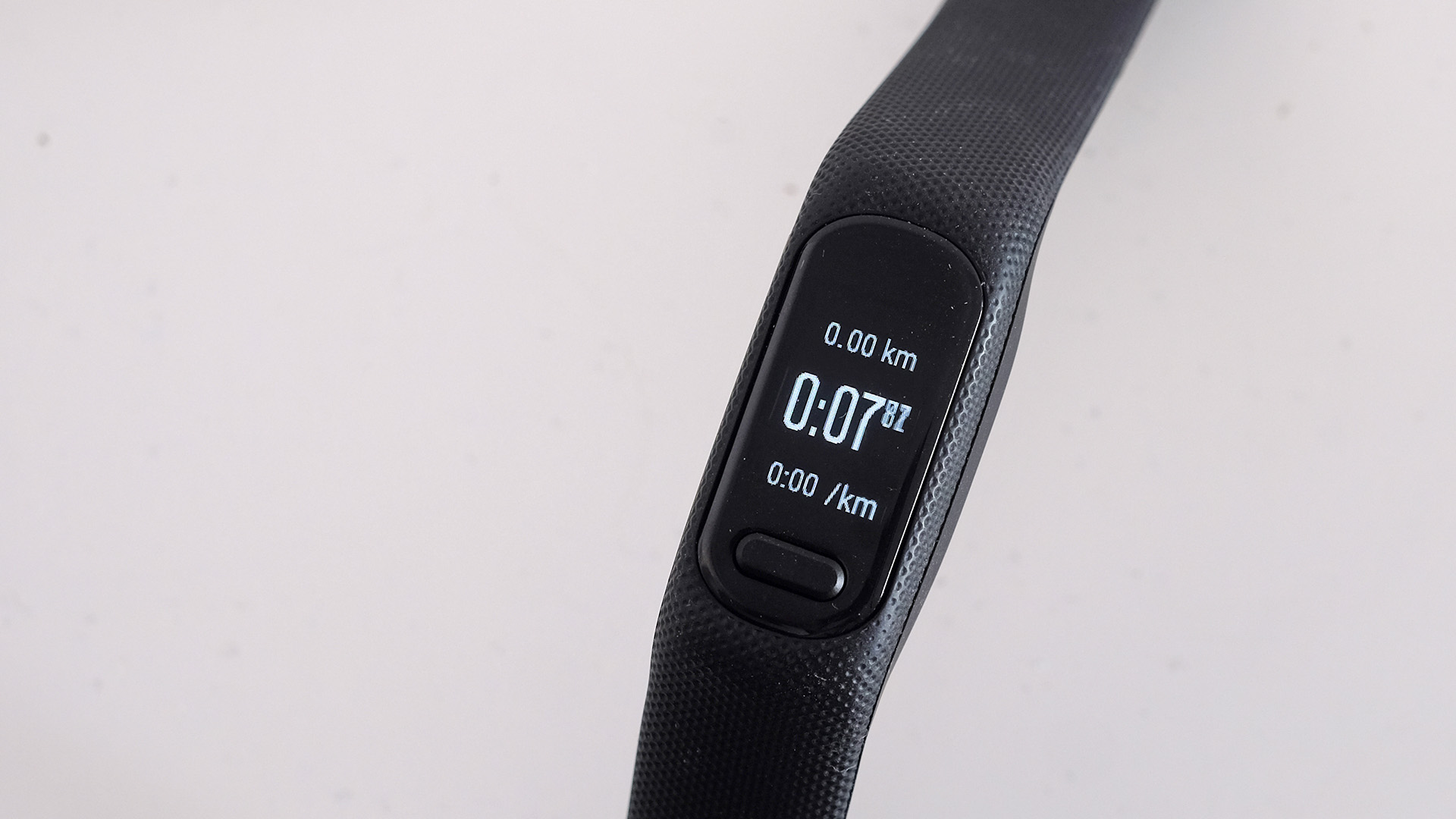
The strength mode has optional reps and sets counters, whereas other smartwatches would make both of these yoga and weight lifting modes entirely generic and basic, recording little more than time and heart rate. Garmin always tries to make its tracking modes really count — it’s one of the best things about the company’s devices, and this particular one.
However, does this excuse the hardware shortcomings? The Fitbit Charge 5 has GPS, plus an ECG sensor and an EDA stress sensor — in our opinion, lots more.
Garmin Vivosmart 5: Performance
The Vivosmart 5 appears to use Garmin’s last-generation tracking hardware — you can tell by a quick look at the shape of the heart rate sensor on the back. However, this is not a bad thing when you consider the once top-end Garmin Fenix 6X used similar tech.
We’ve undertaken a handful of long workouts with the Vivosmart 5 on one arm and the Garmin Enduro 2 on the other, to see what we’re missing. Each time, both watches recorded the exact same maximum heart rate, and each time there was a slight disparity in the average heart rate across the session, by a margin of 1-2 bpm. The Vivosmart 5 reading was almost always the higher of the two. After overlaying the two watches’ graphs on top of each other, there’s no obvious reason for this. The graph lines look extremely similar, showing that it never really loses the plot.
The Vivosmart 5 appears to have one of the better heart rate sensors you can get in a casual fitness tracker, and it is better than the likes of the Fitbit Versa 4’s.
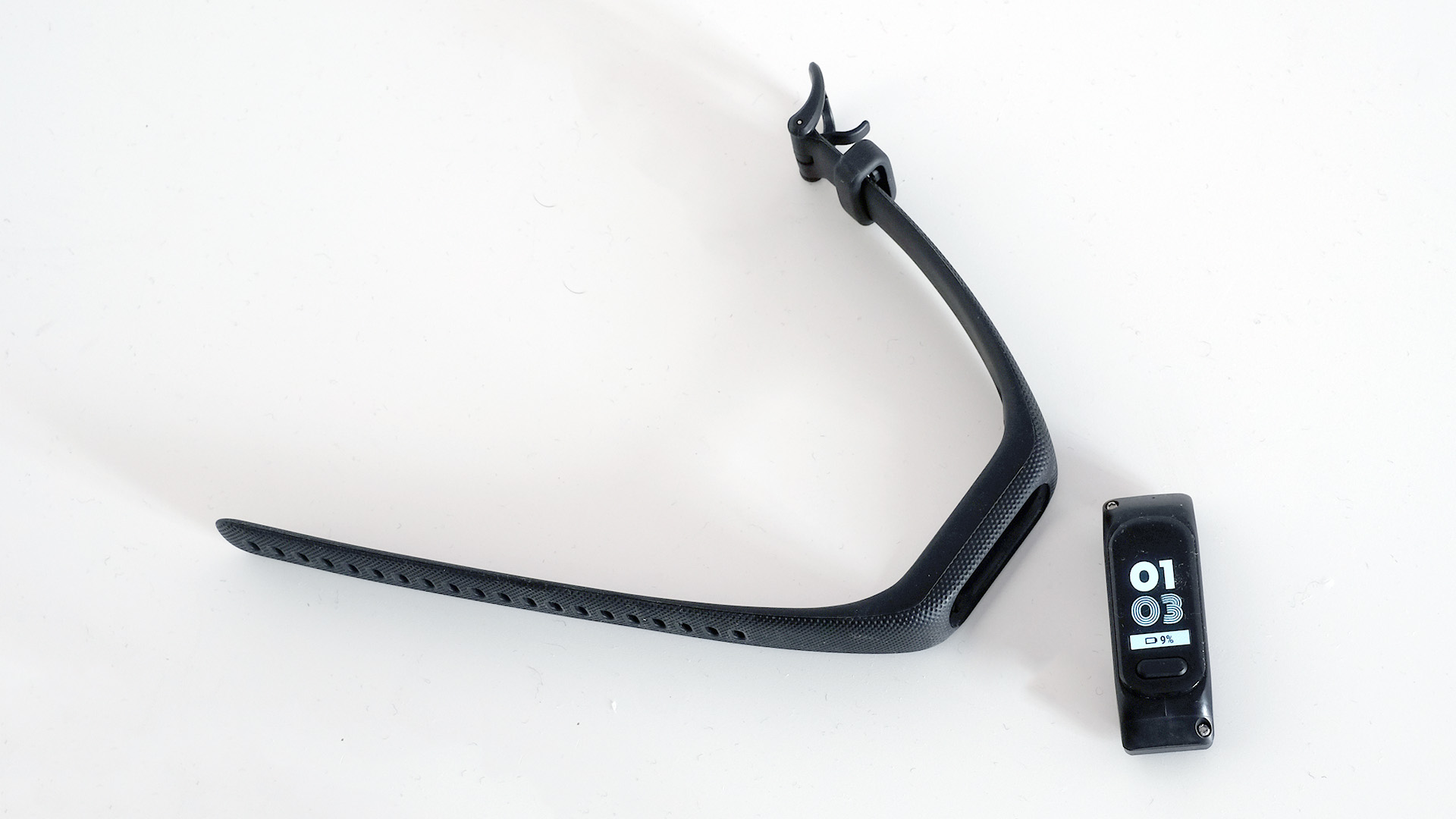
We can’t really judge the band’s location tracking, though, because that is going to rely on the GPS of your phone. However, in all our tracked workouts there were no unexpected drop-outs leading to Garmin having to “make up” the route part-way through.
The Vivosmart 5’s step counts seem fine and the stress tracking feature is good — although stress graphs are much better viewed in the Connect app on your phone than the band’s own tiny screen.
This watch will show you your VO2 Max, which is a decent way to track gains in cardiovascular fitness over the months. And the Vivosmart 5 can broadcast your heart rate reading to other devices using Bluetooth or ANT+. This will be handy for indoor cyclists who use apps like Zwift or Trainerroad.
Garmin says the Vivosmart 5’s battery should last for a week between charges. And as there are no particularly battery-sapping features like GPS or an always-on screen, battery life should stay consistent. We found it lasted around five days with lots of screen checks for notifications and mid-workout stats, but six to seven days is entirely feasible too.
Garmin Vivosmart 5: Verdict
The Garmin Vivosmart 5 is a good fitness tracking band that offers better tracking accuracy and more thoughtful software than the vast majority of trackers of this style. Its heart rate results are sound and Garmin makes each of its exercise modes count.
However, the Vivosmart 5 feels quite limited considering it is not exactly cheap. There’s no stair-counting altimeter or GPS, meaning all the data is derived from your heart rate and blood oxygenation.
This being said, Garmin weaves quite the tapestry out of this limited info, and its heart rate accuracy is much better than that of most fitness bands. However, more cost-conscious buyers may want to wait for a sale.

Garmin Vivosmart 5: If this isn't for you
If you’re not put off by the lack of GPS and are looking for a breezy passive fitness tracker, there are plenty of ways to spend considerably less. The Huawei Band 7, Xiaomi Smart Band 7 and Amazfit Band 5 all have more poppy-looking color displays and cost a lot less.
Want to stay premium? The Fitbit Charge 5 offers more features for the same amount of money, and the Fitbit Inspire 3 will perform the same basics for less money, with a bold color screen.
Andrew Williams is a freelance journalist based near London. He has written about tech for over a decade, contributing to sites such as WIRED, TechRadar, TrustedReviews, Wareable, Stuff, T3, Pocket-lint and many others. When he's not covering fitness tech, he writes about mobile phones and computing, as well as cameras.
